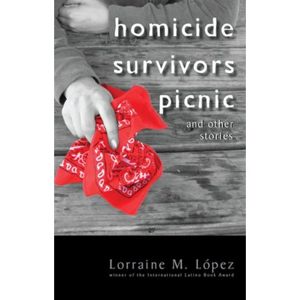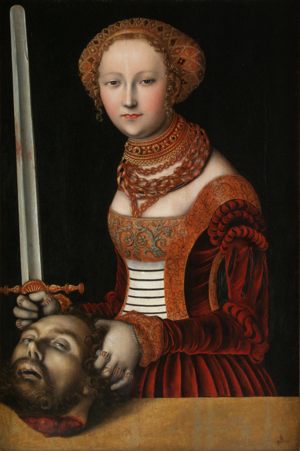
Friday, February 26, 2010
Wednesday, February 24, 2010
Lorraine Lopez nominated for $15,000 PEN/Faulkner fiction award
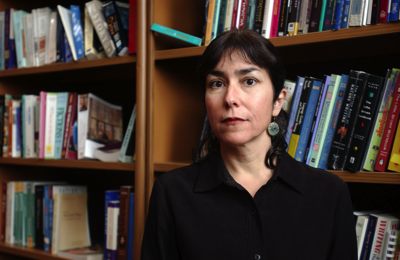
Homicide Survivors Picnic up for largest peer-juried prize for fiction in America
"An amazingly original Flannery O’Connor/Loretta Lynn collision"In January, the Nashville Scene reviewed Homicide Survivors Picnic by Lorraine Lopez, associate professor of English at Vanderbilt, describing the book as one that
defies boundaries of skin color, ancestry and gender, elevating mundane events and predicaments to the scope of larger human dramas.Yesterday, Homicide Survivors Picnic was nominated for the 2010 PEN/Faulkner Award for Fiction, the country's biggest peer-juried prize for fiction.
From Vanderbilt University:
A short story collection by a Vanderbilt University professor described as “an amazingly original Flannery O’Connor/Loretta Lynn collision” is one of five nominees for the 2010 PEN/Faulkner Award for Fiction.
Homicide Survivors Picnic by Lorraine Lopez, associate professor of English at Vanderbilt, will compete with books by Sherman Alexie, Barbara Kingsolver, Lorrie Moore and Colson Whitehead for the award, which comes with $15,000. The other four finalists will receive $5,000.
The PEN/Faulkner Award for Fiction is the largest peer-juried prize for fiction in America.
“This is truly an amazing honor,” said Lopez, who teaches in the graduate creative writing program at Vanderbilt. “I have long admired the other finalists and am thrilled to be in such esteemed company.”
The winner will be named May 8 at the 30th Annual PEN/Faulkner Award ceremony at the Folger Shakespeare Library in Washington, D.C.
“Overwhelmed by book-length stories and storytellers, we three writer-judges had to knuckle down and settle in for some serious summer, fall and winter reading and inner-listening,” said judge Al Young. “We managed to come up with five lingering beauties that freshly express the complex ways Americans believe and behave.”
The other judges were Rilla Askew and Kyoko Mori. The nominations were announced Feb. 23.
Homicide Survivors Picnic illustrates the lives of men, women, teenagers and children at turning-point moments. The title story follows a single mother as she drives her pregnant teenage daughter and son to a gathering for survivors of murdered loved ones.
“An amazingly original Flannery O’Connor/Loretta Lynn collision, this collection lets us witness the indomitable spirit and forces us to take pure joy in all we really ever have a chance at: flowed, gorgeous, weird, rollicking, screwed survival,” wrote critic Heather Sellers of Homicide Survivors Picnic.
For more information on the awards and The PEN/Faulkner Foundation, see www.penfaulkner.org
Thursday, February 18, 2010
Giancarlo and Shirley Guerrero conduct and narrate Peter and the Wolf in Spanish this Saturday, February 20 at the Schermerhorn Symphony Center
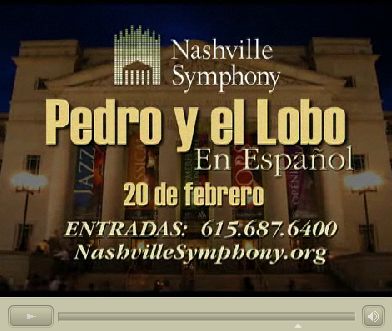
Tickets are only $5
From the Nashville Symphony:On February 20 at 12:30 p.m., the Nashville Symphony will perform Peter & the Wolf at Schermerhorn Symphony Center. Music Director Giancarlo Guerrero will conduct and his wife Shirley Guerrero will narrate the story in Spanish. This concert is educational on two levels: It introduces children to the sound of the orchestra, and also helps develop language skills for children studying Spanish.
Tickets are only $5 and are available now on at NashvilleSymphony.org, and by phone at 615.687.6400.
Wednesday, February 17, 2010
Frist Center hosts Puerto Rico collection "Masterpieces of European Painting from Museo de Arte de Ponce" this Friday through May 16
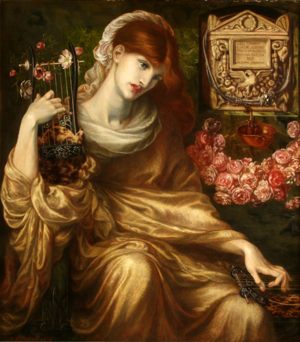
Museum founder’s grandson, Benigno Trigo, teaches at Vanderbilt
Bilingual exhibition catalog, gallery guide, family guide and labels
Free admission Friday, February 19 and Saturday, February 20From the Frist Center for the Visual Arts:
Please join us for a Community Opening for this exhibition on Friday, February 19 and Saturday, February 20 and enjoy free admission sponsored by Regions
The Frist Center for the Visual Arts will open Masterpieces of European Painting from Museo de Arte de Ponce Friday, Feb. 19, 2010. This exhibition, composed of 60 of the greatest highlights of the Museo de Arte de Ponce, located in Ponce, Puerto Rico, will be on view in the Ingram Gallery of the Frist Center through May 16, 2010.
The gallery guide, family guide and labels for the exhibition are written in Spanish and English. The fully illustrated exhibition catalog is also bilingual and includes entries by Katie E. Delmez and Trinita Kennedy, curators at the Frist Center, and Frist Center Executive Director and CEO Susan H. Edwards, Ph.D.
The Museo de Arte de Ponce is widely recognized for its fine collection of Italian and Spanish Baroque, French Academic and British 19th-century art. The museum opened just 50 years ago as Luis A. Ferré, who served as the governor of Puerto Rico from 1968 to 1972, began assembling an encyclopedic collection of art for his fellow Puerto Ricans to enjoy. Today, the museum possesses more than 3,000 works of art and has one of the finest holdings of Old and Modern Master paintings in the Americas.
The exhibition ranges from the gold-leaf idealism of the late Middle Ages to the detailed realism of the end of the 19th century and brings together iconic works from the collection’s Italian, French, Dutch, Flemish, Spanish, German and Austrian schools of painting. Among the artists represented are Peter Paul Rubens (1577–1640), Bernardo Strozzi (1581–1644), Francisco de Zurbarán (1598–1664), Anthony van Dyck (1599–1641), Dante Gabriel Rossetti (1828–1882), Sir Edward Coley Burne-Jones (1833–1898).
“This collection of European art from the Museo de Arte de Ponce is a tribute to Ferré’s vision and commitment to beauty from all the ages” says Trinita Kennedy, associate curator at the Frist Center. “He wanted to create an institution that would allow his fellow Puerto Ricans access to the work of some of the finest artists in the world. The collection, while relatively little known outside Puerto Rico until recent years, is truly extraordinary. Like Thomas Frist, founder of the Frist Center, Ferré had education as one of his primary goals for his museum. He succeeded, to be sure. Not only does the collection include some of the ‘stars’ of the art world, but he also acquired superb works by artists who, though lesser known, have made important artistic contributions,” Kennedy concluded.
The museum founder’s grandson, Benigno Trigo, who currently resides in Nashville and teaches at Vanderbilt University, has written the exhibition’s gallery guide. Composed from a personal point of view, Trigo’s essay, Luis Ferré’s Sensibility: The Healing Core of the Museo de Arte de Ponce, recalls the travels, inspirations and aspirations that led Ferré to begin collecting and to his subsequent creation of the Museo de Arte de Ponce.
“We are thrilled to have such a personal connection to this exhibition,” said Frist Center Executive Director and CEO Susan H. Edwards, Ph.D. “Benigno Trigo has been wonderful in helping us look beyond the works on the wall to understand how art transformed his grandfather’s life and the lives of those around him.”
Luis A. Ferré, a true 20th-century Renaissance man, studied engineering at the Massachusetts Institute of Technology and music at the New England Conservatory of Music. Following graduation, he returned to his native Puerto Rico where he became an industrialist, gifted pianist, philanthropist and, eventually, governor of the island. Inspired by the American way of democracy he experienced in Cambridge, Massachusetts, Ferré applied democratic principles to a number of his endeavors back home, one of which was helping to transform the family business into a successful industrial and media empire. With the advice of art historians, Ferré assembled what is today the core of an impressive collection and founded Museo de Arte de Ponce in 1959.
By 1965, Luis A. Ferré’s once modest museum outgrew its original colonial house in central Ponce. Ferré commissioned Edward Durell Stone, a former pupil of Frank Lloyd Wright and architect of the Museum of Modern Art in New York, to design a permanent home for the collection, which received the American Institute of Architecture’s Medal of Honor in 1967.
The masterpieces of the Ponce collection offer exceptional variety and transcend time in their beauty. Working on every scale and through various modes of expression, the artists in this exhibition found inspiration in classical mythology, ancient Greek and Roman history, the Bible and even fleeting moments from everyday life. Through these paintings, the visitor is able to follow the major trends in European art from the Renaissance to the Modern era.
An audio tour for Masterpieces of European Painting from Museo de Arte de Ponce is available at visitor and member services for the duration of this exhibition.
This exhibition was organized by Museo de Arte de Ponce, The Luis A. Ferré Foundation, Inc., Ponce, Puerto Rico.Related Public Programs
Wednesday, February 17
Art Making: Terrific Triptychs
10:00 a.m.–5:30 p.m.
Grand Lobby
Free
Drop in, be inspired, and create your own work of art in the Grand Lobby throughout the day. Featured activity: Draw and embellish your own scene on a paper triptych panel that you can take home to display! Triptychs are works of art divided into three sections that first became popular as altar paintings during the Middle Ages.
Friday, February 19
Curator’s Perspective: Masterpieces of European Painting from Museo de Arte de Ponce
6:30 p.m.
Auditorium
Free
Join Cheryl Hartup, curator-in-chief at the Museo de Arte de Ponce, for a lively discussion of this exhibition.
Thursday, March 4
Gallery Talk: “Truth to Nature? From Pre-Raphaelites to Aesthetes”
7:00 p.m.
Meet at the information desk
Free with gallery admission
Dr. Morna O’Neill, Mellon assistant professor of nineteenth-century European art at Vanderbilt University, will discuss paintings by British artists in Masterpieces of European Painting from Museo de Arte de Ponce that allude to an artistic debate that raged in London during the 1850s and 1860s: namely, what is the relationship of art to the “real world”? In 1848 the artists who called themselves the “Pre-Raphaelites” admired the paintings of 14th-century Italy, which were created before the time of the painter Raphael. Dante Gabriel Rossetti, John Everett Millais and William Holman Hunt strove to return to that style by observing nature directly, taking their cue from the art critic John Ruskin, who exhorted artists to “go to Nature, rejecting nothing, selecting nothing.” Yet in the following decades, Rossetti forged a new path through Aestheticism, the European
artistic movement that espoused the credo of “art for art’s sake” during the second half of the 19th century. This single-minded devotion to beauty declared that art should not instruct, amuse or entertain. The following generation of artists, chief among them Edward Coley Burne-Jones, sought to reconcile their admiration for Ruskin and Pre-Raphaelite painting with the search for beauty.
Thursday, March 11
7:00 p.m.
Meet at the information desk
Free with purchase of gallery admission
Join Trinita Kennedy, associate curator at the Frist Center, for a tour of Masterpieces of European Painting from Museo de Arte de Ponce.
Friday, March 19
ARTini
7:00 p.m.
Meet at the information desk
Free with purchase of gallery admission
Join Anne Taylor, curator of interpretation at the Frist Center, as she leads an informal conversation about one or two works of art in Masterpieces of European Painting from Museo de Arte de Ponce. Complete your evening by relaxing in the Grand Lobby with beverages from the café, including special ARTinis, and visiting with friends.
Tuesday, March 23
ARTini
12:00 p.m.
Meet at the information desk
Free with purchase of gallery admission
Take a break from your day and join Anne Taylor, curator of interpretation at the Frist Center, as she leads an informal conversation about one or two works of art in Masterpieces of European Painting from Museo de Arte de Ponce. Complete your visit with a stop in the café or gift store.
Sunday, March 28
Family Day
1:00-5:30 pm
Free
Enjoy a fun-filled day of excitement with friends and family including special art-making activities, live music and dance performances.
Thursday, April 8
“Luis Ferré’s Sensibility: The Healing Core of the Ponce Museum”
6:30 p.m.
Auditorium
Free
Join Benigno Trigo, Ph.D., grandson of Luis A. Ferré, for a discussion on the importance of art to the community. Trigo will focus on the ideas that motivated his grandfather to found the Museo de Arte de Ponce, its placement in the Puerto Rican community and the different iterations of the institution’s existence. Insights into Ferré’s choices for the artwork he purchased for the museum will also be shared.
The placement of a museum in any community is done so in the hopes of inspiring its citizens. Whether that inspiration leads to seeing their world in new ways or doing great things every day lies in the collective efforts of the museum, the objects on display and within the individual who comes into contact with them. The Frist Center for the Visual Arts was founded on the belief that the visual arts could inspire people to look at their world in new ways. This notion was also held by Luis A. Ferré, the founder of the Museo de Arte de Ponce, who was convinced that seeing original works of art would have a transformative effect on the individuals and community of his hometown, the poverty stricken Ponce, Puerto Rico. The Frist Center for the Visual Arts and Museo de Arte de Ponce are kindred spirits in this regard; both were founded for the enrichment of their surrounding populations. On the day the Frist Center celebrates its ninth anniversary in Nashville, the grandson of the founder of the Museo de Arte de Ponce will present a talk that illustrates the importance of artwork on both the individual and community levels.
Friday, April 23
Gallery Talk: “A Tale of Two Cities: Making and Marketing Art in Antwerp and Amsterdam, 1500–1700”
7:00 p.m.
Meet at the information desk
Free with purchase of gallery admission
Inasmuch as paintings have come to be considered priceless works of art, they are also cultural commodities that are bought and sold, traded and exchanged. Artists of the early modern period, while pursuing their own creative interests, were also crafts people faced with the challenge of earning a living through their trade. Jay Bloom, assistant professor of the history of art, Vanderbilt University, will look at the art of early modern Antwerp and Amsterdam, cities which, at the time, were major centers of global commerce boasting extraordinary artistic output that was unrivaled in the known world. By considering a range of the innovative techniques that were developed to produce and market paintings by artists and dealers alike, the histories presented in this talk will offer both a survey of canonical artists of the period—including Peter Paul Rubens and Anthony van Dyck—and an alternative means by which to understand the complex motivations underpinning artistic practice.
Accredited by the American Association of Museums, the Frist Center for the Visual Arts, located at 919 Broadway in downtown Nashville, Tenn., is an art exhibition center dedicated to presenting the finest visual art from local, regional, U.S. and international sources in a program of changing exhibitions. The Frist Center’s Martin ArtQuest Gallery features more than 30 interactive stations relating to Frist Center exhibitions. Gallery admission to the Frist Center is free for visitors 18 and younger and to Frist Center members. Starting Jan. 2, 2010, Frist Center admission is $10.00 for adults and $7.00 for seniors, military and college students with ID. College students are admitted free Thursday and Friday evenings, 5–9 p.m. Discounts are offered for groups of 10 or more with advance reservation by calling 615.744.3246. The Frist Center is open seven days a week: Mondays through Wednesdays, and Saturdays, 10 a.m.–5:30 p.m.; Thursdays and Fridays, 10 a.m.–9 p.m. and Sundays, 1–5:30 p.m., with the Frist Center Café opening at noon. Additional information is available by calling 615.244.3340 or by visiting our Web site at www.fristcenter.org.
Tuesday, February 16, 2010
Danny Salazar at Las Cazuelas invites Spanish-speaking singer-songwriters, poets to join him Tuesdays at Las Cazuelas

From Danny Salazar:
Hola!
Hope everyone had a wonderful weekend of love and 'amistad'. We had a blast at Las Cazuelas last night with a full house. Just want to let you all know that I'm doing something "new" at Las Cazuelas starting [Tuesday]. I'll be hosting a night of original music and maybe some poetry? I have several amazing guests lined up! Hope to see you there and please help spread the word.
Este es un llamado para mi gente de habla hispana que le da por escribir y cantar canciones o recitar poesia. Los espero este y todos los martes!
DANNY SALAZAR + FRIENDS
Las Cazuelas Mexican Grill
4114 Nolensville Pike
Nashville, Tn 37211
7pm
De todo corazon,
Danny Salazar
Monday, February 15, 2010
Channel 5 disproves yet promotes anti-Muslim accusations circulated by local churches



Above: Cornerstone Church, Madison, TN and
Islamville community mosque, Dover, TN
The rest of the country is starting to learn about the journalistic embarrassment committed by Channel 5 after the 2010 Super Bowl. If you haven't heard, the background is that the station aired a story about local Christian churches (including the above-pictured Cornerstone Church in Madison) who are circulating a DVD with negative claims about specific Muslim communities across America, including a small, rural Muslim community in Dover, Tennessee called Islamville. The station's report concludes that the negative claims against the Dover community are bunk.
In promos and in much of the story itself, however, the station planted the opposite conclusion in the minds of its viewers, for ratings.
One summary is here.
What else can be said about this than what's already been said across Nashville and also in the national media?
The horse's mouth: what the Christian Action Network and Channel 5 have to say, after the fact
From the Christian Action Network, the people who made the DVD:One of the best things we can do is alert the people and media...And this T.V. news broadcast has done just that.From the station's news director Sandra Boonstra: the word "inflammatory" is a myth, and people act only rationally:
I also do not believe that a two part report ... is going to incite violence in people because they just woke up after seeing our stories and suddenly decided they are anti-Muslim. I would hope that any opinion someone may have on a topic would be based on something much deeper.As long as we're hoping, I sure hope the station isn't planning on running any stories on suicide during the next sweeps week. Note to news directors: it's common knowledge that how news is reported can directly affect viewer behavior, and suicide is one of the more famous examples.
The Columbia Journalism Review caps its summary of this Music City Debacle by correctly and elegantly saying that
the truth should have been quickly highlighted, not kept away from viewers while urging them to tune back in, and not delayed while factless charges were leveled against a beleaguered minority.
Ethical guidelines to keep in mind
The ethics archives of journalism site Poynter.org warn against this kind of reporting:- Journalists Must Expose, Not Perpetuate, Bogus News (this is a 2009 story that, interestingly enough, starts with an anecdote about the Vanderbilt Hustler and the Nashville City Paper):
when professional newsrooms become part of the problem, misinformation elevates from an annoyance to a danger to democracy.
- Anytime you promote a stereotype, you undermine your credibility:
It creates images in the minds of viewers and readers. ... More often than not, stereotypical terms result in confusion about what you want to describe. More important than being sensitive is upholding the fundamental value of accuracy.
- Breaking News of Uncertain Sourcing:
Although many journalists are eager to point out when they have a scoop, few give much ink or airtime to competitors when they are repeating what others report. ... it would make sense to put the attribution in the headline



Within hours of broadcast: graffiti on local mosque
Anti-Muslim graffiti appeared on a local mosque within 48 hours of the conclusion of the Channel 5 report. Read more from the Tennessee Immigrant and Refugee Rights Coalition, the Nashville Scene, and the Nashville City Paper. See also Post Politics, which links to local blog coverage including Aunt B. and Southern Beale.Friday, February 12, 2010
Lipscomb hosts inaugural breakfast this morning for youth excellence series "La Sangre Llama"
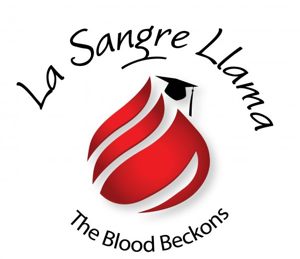
"'The Blood Beckons' ... speaks to the intense, indelible bond between family members"
YMCA Hispanic Achievers, State Farm also partnerFrom Lipscomb University:
Lipscomb University is partnering with La Sangre Llama, the YMCA Latino Achievers and State Farm® to present the inaugural event of La Sangre Llama – The Blood Beckons on Feb. 12.The Tennessean's advance report of the event is here. The group's Facebook page is here.
La Sangre Llama begins with a breakfast for Nashville’s business and civic community leaders at 8 a.m. today, Feb. 12, in Lipscomb University’s Ezell Center. At the breakfast, “La Sangre Llama” co-founders will present the results of focus groups conducted with local youth discussing their reality, their challenges and their future. The breakfast is $25 per person. Each attendee will receive a copy of the La Sangre Llama report.
La Sangre Llama is a series that seeks to encourage Latino youth to excel through education and service to their community while preserving their cultural values. Following the breakfast, a “Lessons Learned” conference for Latino high school and college students featuring motivational sessions with four nationally recognized Latina leaders will take place. After the conference, participants will be paired with mentors in an effort to develop a sustainable support system for the students.
“’La sangre llama’ is a Spanish ‘dicho,’ a phrase that speaks to the intense, indelible bond between family members,” said Eva Maldonado, La Sangre Llama co-founder and a clinical psychologist. “It goes to the heart of the bond between members of the Latino community who share a common cultural identity, a set of core values. As a bicultural individual, I recognize the importance of maintaining those values that define you as a person while simultaneously functioning effectively in another culture. This is the message to our Latino youth.”
Co-founder Zulma X. Barrios, a Latina community leader and multicultural consultant, describes the program as “an effort to educate the youth and the community, to create a cross-cultural dialogue in the face of the Latino population boom in cities experiencing rapid, recent growth.”
This event follows Lipscomb University’s ground-breaking Hispanic Forum dialogue, “Abriendo Puertas/Opening Doors,” which began last April. Lipscomb’s focus on identifying opportunities to serve the local Hispanic community makes them a natural partner for La Sangre Llama.
For more information, contact the La Sangre Llama series executive producer, Ann Gillespie, CEO of ProLingua, Inc. at 615-467-3026.
Cindy McCain, salsa journalist, gives to Ecuador orphanage through "Classic Coup" t-shirts
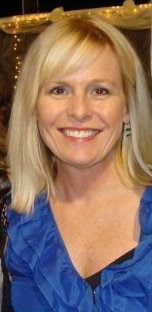
"Working with them is perfect, because I have a real love now for Latin American culture and people"
Nashville salsa-dancing journalist Cindy McCain is featured in her this month, in an article about McCain's literary-themed t-shirt company Classic Coup, part of whose sales go to orphanages in Ecuador:She writes regularly about interpreting literature and understanding the classics at classiccoup.blogspot.com, where visitors can also learn about her latest literary initiative — T-shirts.
Born out of a conversation with former student and current designer Angela Muir, a graduate of the Rhode Island School of Design, Classic Coup, Inc., sells T-shirts with the aim of literally putting the word about literature on the street. From the text message-style “Party at Gatsby’s” to an imaginary Facebook page for the character Laura from Tennessee Williams’ play “The Glass Menagerie,” these stylish shirts bring the classics into modern, everyday life.
...
A newfound interest in the decidedly unbookish area of salsa dancing (a subject McCain writes about for Examiner.com) combined with the desire to help others led McCain and Classic Coup to a collaboration with Kaleo Kids, a nonprofit organization that provides supplies to orphanages in Ecuador. A percentage of Classic Coup profits goes to Kaleo Kids. “Working with them is perfect, because I have a real love now for Latin American culture and people,” McCain says. “This is something that will hopefully bring education and good things to children there.” She has also become more interested in classic works by Latino authors, such as The House on Mango Street by Sandra Cisneros and Love in the Time of Cholera by Gabriel García Márquez — an interest she intends to share with students and blog readers alike.
Wednesday, February 3, 2010
What does it mean to live in a totalitarian country?
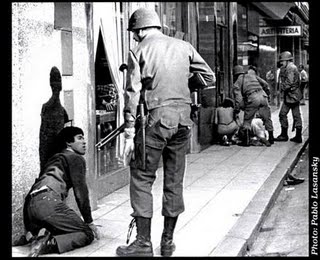
Some people have been saying that we live in one. As somebody that spent many years of his life scared to death [about government control] of living under one, I figure I'll share some of my memories.
So what does it mean to live in a totalitarian country?
It is to be very afraid of the police, because we have seen them arresting and beating up people randomly, for no other reason than they can.
It is to see the military treating you like the enemy all the time; i.e. by wantonly pointing their guns at you for no reason.
It is because you know that every paper, radio station or TV station is now controlled by the regime and only prints propaganda.
It is to be afraid of the teachers in your school because they carry guns and work for the regime, and because the principal was replaced by a regime guy who is not interested in education.
It is carrying an ID with your picture and fingerprint at all times, and losing it puts you into a panic when you see a policeman because no ID means immediate arrest.
It is to see people being picked up in the middle of the city, and put roughly in an unmarked car while screaming at the top of their lungs that they are being kidnapped. It is to be paralyzed by fear, unable to help, knowing that person will never be seen again.
It is the clergy, that while working to help their fellow man is disappeared by the regime, and shows up dead on an unmarked grave.
It is shady corporations using the regime to get rid of workers who advocate better working conditions, universities getting rid of opposition professors and students, and people targeting the neighbors they dislike.
It is families broken apart by people fleeing the country to a safer place, or by forced disappearance and the people that stay behind waiting for the missing loved ones.
It is a system that empowers the regime to govern with total impunity, unafraid of consequences.
All over the world there are people that live under totalitarian regimes. People are being kidnapped, tortured and killed. Kids are being removed from their families and raised by the regime.
Every day, extremist ideologues try to portray our democracy as a dictatorship, and this is something very frightening to a lot of people. But the fact that they can do that, that they can make this sort of claim is the ultimate proof that we don't live in one. If we did live in, let's say, Cuba - or the Argentina of my youth - they will be afraid of ending up like the hundreds of journalists who died or were tortured for speaking truth to power all over the world.
To describe our democracy as a totalitarian regime insults the lives and memories of people that live under this and other terrible conditions. It insults them, it insults us.
Fabian Bedne

